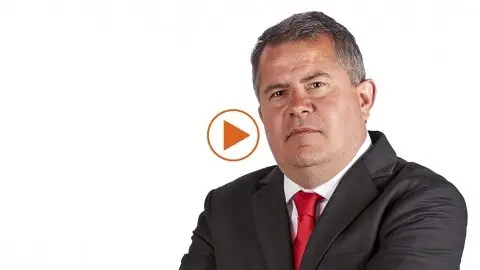US: The Forceful Fed
The minutes to the emergency 15 March FOMC meeting show the Fed quickly grasped the economic and financial market threat posed by Covid-19 and the importance of an aggressive response to mitigate the dangers. Policy will not be reversed until it is clear that the Covid-19 threat has passed and the economic hangover has gone
Forceful Fed to stay the course
The minutes to the Federal Reserve’s emergency FOMC meeting on Sunday, 15 March, at which policymakers cut rates 100bp and re-instigated quantitative easing, emphasised the desire to show a “forceful” reaction to the economic threat from the Covid-19 crisis.
Rates to stay at zero
Officials highlighted the “extremely large degree” of uncertainty, but stated explicitly that rates would stay at zero “until policymakers were confident that the economy had weathered recent events and was on track to achieve the Committee's maximum employment and price stability goals”.
We already knew that Loretta Mester formally opposed the full 100bp reduction in favour of a more cautious 50bp reduction, but the minutes also show that she was not alone in having reservations. Initially, “a few participants” preferred 50bp and to “wait until there was greater assurance that the transmission mechanism of monetary policy via financial markets and the supply of credit to households and business was working effectively”. However, in the end they were convinced to go with the majority in favour of 100bp.
With regard to the quantitative easing, FOMC members wanted to stress the primary purpose was to “support the smooth functioning of Treasury and agency MBS markets rather than to provide further monetary policy accommodation by pushing down longer-term yields”. Nonetheless, a “couple of participants noted that because some of the purchases would be at longer maturities, the purchases could provide some accommodation by lowering longer-term yields”. It seems likely that these voices grew louder given the Fed subsequently expanded its QE to become “unlimited”.
Low for longer...
It is important to emphasise that the Federal Reserve’s response was largely to mitigate the threat of dislocations in credit markets compounding the direct economic threat from Covid-19. Financial market strains have largely eased, but some tensions do remain and the Fed continues to show clear intent to deal with those rapidly and forcefully. We are now more focused on the fiscal support, which is clearly also sizeable and may well be stepped up further in the coming months.
Nonetheless, this is all about tiding households and businesses over until the economy re-opens. This will take time though with US restriction continuing through to the end of the month. We also have to recognise that there could be setbacks along the way that could reignite financial market tensions – we will be closely following how the re-opening process develops in Austria that starts next week.
Even if we do start to see the US begin the process in May, it will take time to return to business as usual. Moreover, we continue to expect the economy to contract more than 12% peak to trough with the lost output not recouped until the summer of 2022.
We expect the economy to contract more than 12% peak to trough
Importantly, Fed officials also believe that inflation will weaken and stay low – “reflecting both the deterioration in resource utilisation and sizeable expected declines in consumer energy prices”. As such we see little prospect of the Fed reversing course and taking back any of their stimulus and support measures for at least the next twelve months.
This publication has been prepared by ING solely for information purposes irrespective of a particular user's means, financial situation or investment objectives. The information does not constitute investment recommendation, and nor is it investment, legal or tax advice or an offer or solicitation to purchase or sell any financial instrument. Read more
Download
Download snap
8 April 2020
Covid-19: The global battle continues This bundle contains 12 Articles